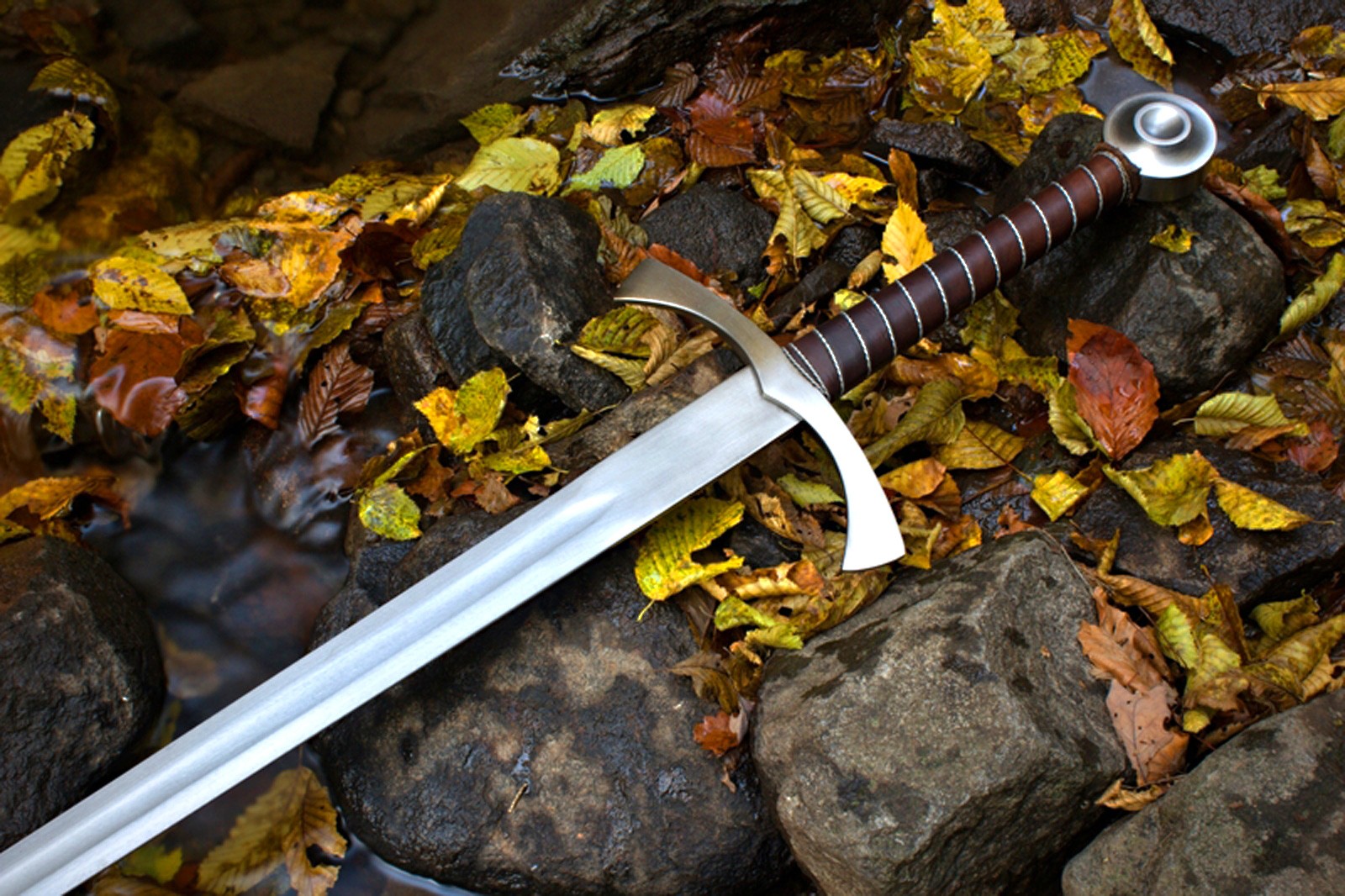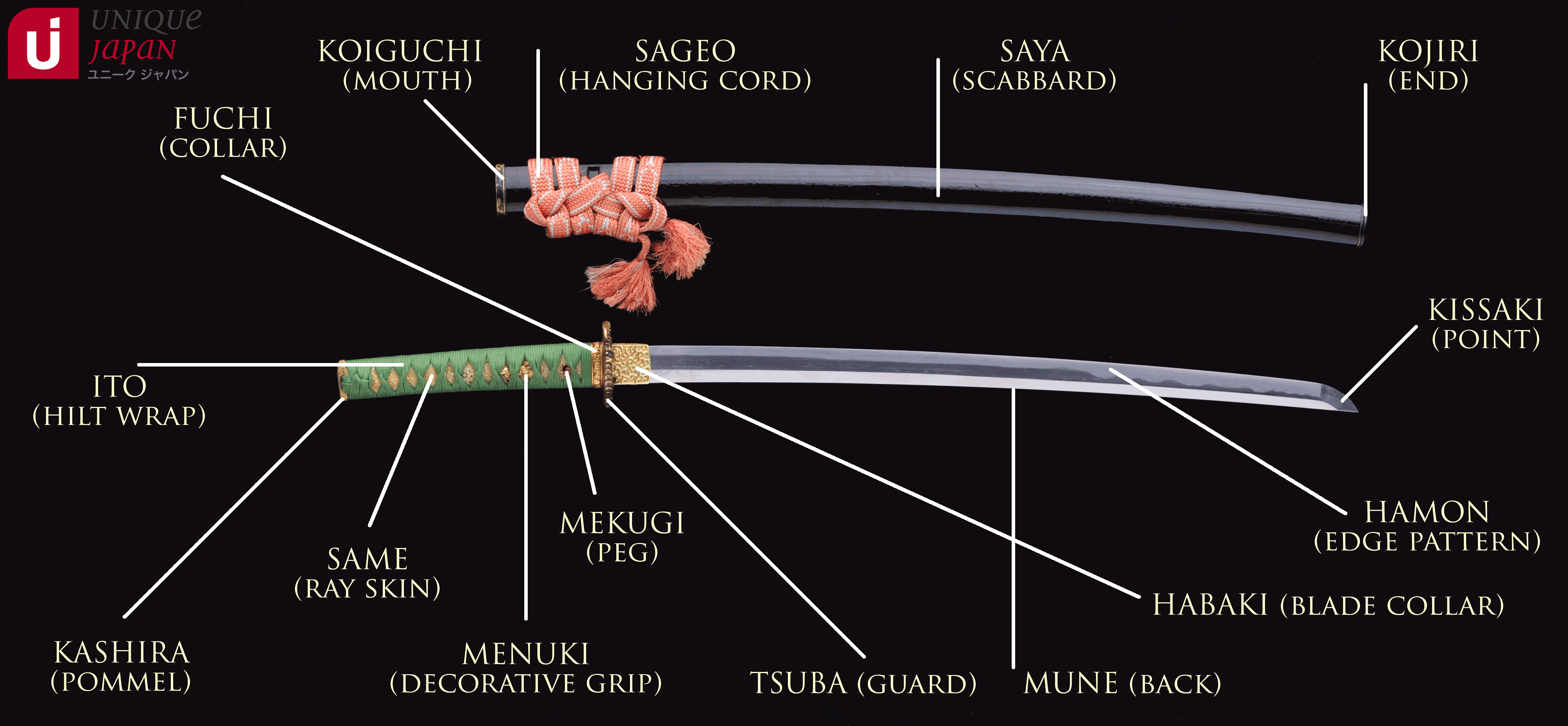Historical and Cultural Significance: Sword Meaning

The sword has a long and storied history, dating back to the Bronze Age. It is one of the oldest and most widely used weapons in human history, and has played a significant role in warfare, hunting, and self-defense.
The earliest swords were made of bronze, and were relatively short and straight. Over time, swords evolved to become longer and more curved, and were made of iron and steel. Different cultures developed their own unique styles of swords, each with its own advantages and disadvantages. For example, the Roman gladius was a short, double-edged sword that was ideal for close-quarters combat, while the Japanese katana was a long, single-edged sword that was designed for cutting.
Swords have also played a significant role in mythology, literature, and art. In many cultures, the sword is seen as a symbol of power, courage, and honor. It is often associated with heroes and warriors, and is often used as a symbol of authority. In literature, swords are often used as a plot device, and can be used to represent a character’s inner conflict or to symbolize a change in their fortunes.
Types of Swords
There are many different types of swords, each with its own unique design and purpose. Some of the most common types of swords include:
- Straight swords: Straight swords are the oldest type of sword, and are characterized by their straight blade. They are typically used for thrusting and cutting, and are often used in close-quarters combat.
- Curved swords: Curved swords are characterized by their curved blade. They are typically used for slashing and chopping, and are often used by cavalry.
- Double-edged swords: Double-edged swords have a blade that is sharpened on both sides. They are typically used for cutting and thrusting, and are often used by infantry.
- Single-edged swords: Single-edged swords have a blade that is sharpened on only one side. They are typically used for cutting, and are often used by cavalry.
Symbolism of the Sword, Sword meaning
The sword is a powerful symbol that has been used in many different cultures throughout history. It can represent power, courage, honor, justice, and even death. In some cultures, the sword is seen as a sacred object, and is often used in religious ceremonies.
The sword is also a common symbol in literature and art. In literature, the sword can be used to represent a character’s inner conflict, or to symbolize a change in their fortunes. In art, the sword is often used as a symbol of power and authority.
Anatomy and Construction

Sword meaning – A sword is a bladed weapon that has been used for centuries. It is typically composed of three main parts: the blade, the hilt, and the scabbard. The blade is the sharp, cutting edge of the sword, and it can be made from a variety of materials, including steel, iron, and bronze. The hilt is the handle of the sword, and it is typically made from wood, bone, or metal. The scabbard is a sheath that protects the blade when it is not in use, and it is typically made from leather or wood.
The anatomy of a sword is complex, and there are many different factors that can affect its balance, weight, and handling. The length of the blade, the weight of the hilt, and the shape of the scabbard all play a role in how the sword feels in the hand and how it performs in combat.
Materials and Techniques
The materials and techniques used in sword construction have evolved over time. In the early days, swords were made from bronze, which is a relatively soft metal. However, as technology improved, swords began to be made from iron and steel, which are much harder and more durable. Today, most swords are made from steel, which is heat-treated to give it the desired hardness and flexibility.
The techniques used to construct a sword also vary depending on the time period and culture. In the past, swords were often forged by hand, which is a time-consuming and labor-intensive process. Today, most swords are made using a combination of forging and machining, which allows for greater precision and consistency.
Balance, Weight, and Handling
The balance, weight, and handling of a sword are all important factors to consider when choosing a weapon. A well-balanced sword will feel comfortable in the hand and will be easy to control. A heavy sword will be more powerful, but it will also be more tiring to wield. A sword with a good handling will be easy to maneuver and will allow the user to strike quickly and accurately.
The balance, weight, and handling of a sword are all affected by the length of the blade, the weight of the hilt, and the shape of the scabbard. A longer blade will make the sword more difficult to balance, but it will also give it greater reach. A heavier hilt will make the sword more powerful, but it will also make it more tiring to wield. A scabbard that is too large or too small will make it difficult to draw and sheathe the sword.
Use and Techniques
Swordsmanship, the art of wielding a sword, encompasses a wide array of techniques honed through centuries of combat and practice. These techniques can be broadly categorized into cutting, thrusting, and parrying, each with its distinct purpose and application in combat.
Cutting techniques involve utilizing the sharp edge of the blade to inflict slashing wounds. They are particularly effective against unarmored opponents or those with exposed limbs. Thrusting techniques, on the other hand, focus on delivering a precise and penetrating strike, aiming to pierce armor or reach vital organs. Parrying techniques, as their name suggests, are defensive maneuvers designed to deflect or redirect an opponent’s attack, creating an opening for a counterattack.
Schools and Styles of Swordsmanship
Over the centuries, numerous schools and styles of swordsmanship have emerged, each with its own unique set of techniques and philosophies. Some notable schools include:
- Western Martial Arts: Encompassing a diverse range of styles, such as medieval longsword fencing, Renaissance rapier combat, and modern sport fencing.
- Eastern Martial Arts: Including Japanese kendo, Chinese wushu, and Korean hapkido, which emphasize fluid movements, precise strikes, and a strong connection between mind and body.
Role of the Sword in Combat
Throughout history, the sword has played a pivotal role in combat, both as a primary weapon and as a symbol of power and authority. In ancient times, swords were essential for close-quarters combat, particularly in melee engagements. As warfare evolved, the sword remained a formidable weapon, especially when paired with other armaments like shields or armor.
In modern times, the sword’s role in combat has diminished with the advent of firearms and other advanced weaponry. However, it continues to be used in ceremonial settings, martial arts training, and as a collectible item for enthusiasts and historians alike.
In ancient cultures, the sword was a symbol of power and honor, a weapon wielded by warriors and kings. Its sharp edge represented the ability to cut through obstacles, both physical and metaphorical. Sword meaning extended beyond the battlefield, as it was also associated with justice, truth, and the protection of the innocent.
Even today, the sword remains a potent symbol of strength, courage, and the indomitable spirit.
In the hands of a skilled warrior, a sword is more than a weapon; it is an extension of their will. Its blade cleaves through the air, leaving a trail of destruction in its wake. But even the sharpest sword can be broken, and the strongest warrior can be defeated.
Such is the nature of life, a constant cycle of creation and destruction, victory and defeat. Like the tomorrow pit , where the future is uncertain and the past is forgotten, the meaning of a sword is not set in stone.
It is what we make it, and it will be what we leave behind.
A sword, a symbol of power and violence, is often used to shed blood. But in the Tomorrow Pit , it is a tool for healing. In this surreal and enigmatic realm, swords are used to cut away the past and open up new possibilities.
The sword’s sharp edge becomes a scalpel, slicing through the wounds of trauma and despair, leaving behind a path for redemption and renewal.
A sword, a weapon of war and symbol of power, has been wielded by countless hands throughout history. Its meaning has evolved over time, but its essence remains: a tool of destruction and protection. Like a casino , where fortune and ruin can dance in a single night, the sword holds the power to both bestow and extinguish life.
Yet, amidst the chaos and bloodshed, it also serves as a reminder of the fragility of human existence, a constant companion on the battlefield of life.
In the realm of weapons, the sword stands as a symbol of power and valor. Its sharp edge cuts through flesh and bone, severing destinies with each stroke. Yet, in the realm of entertainment, a different kind of sword exists—one that deals in chance and fortune.
The casino , with its flashing lights and spinning wheels, offers a tantalizing dance with destiny, where the sword of luck may bestow its favor upon the bold or leave them vanquished in its wake. And so, the sword, whether forged in steel or spun in roulette, remains a potent symbol of both triumph and tragedy.